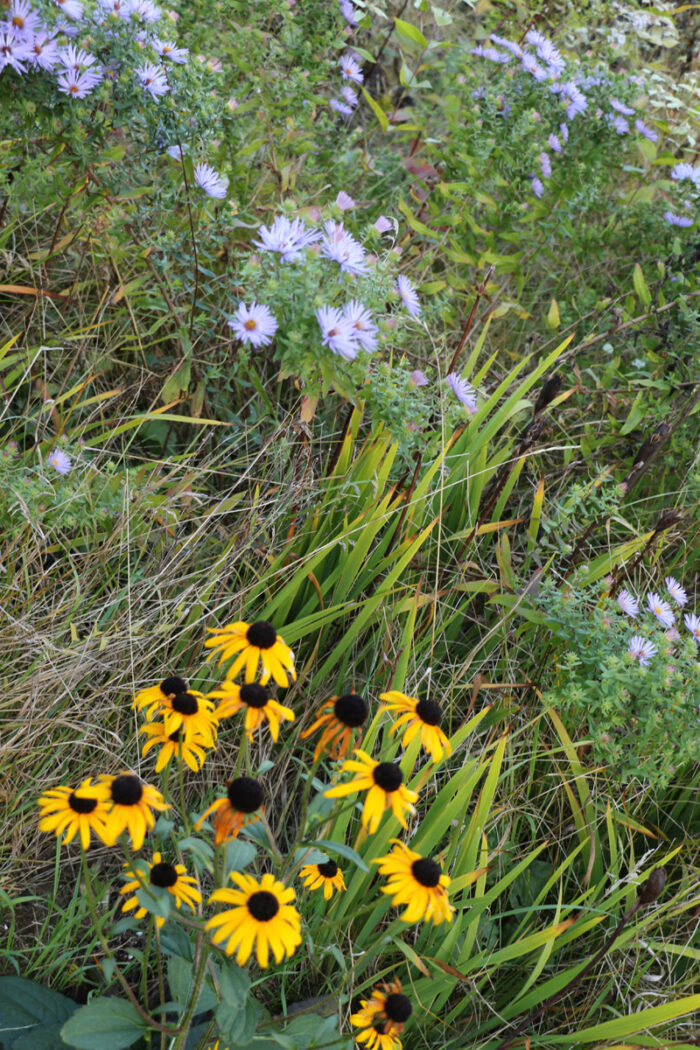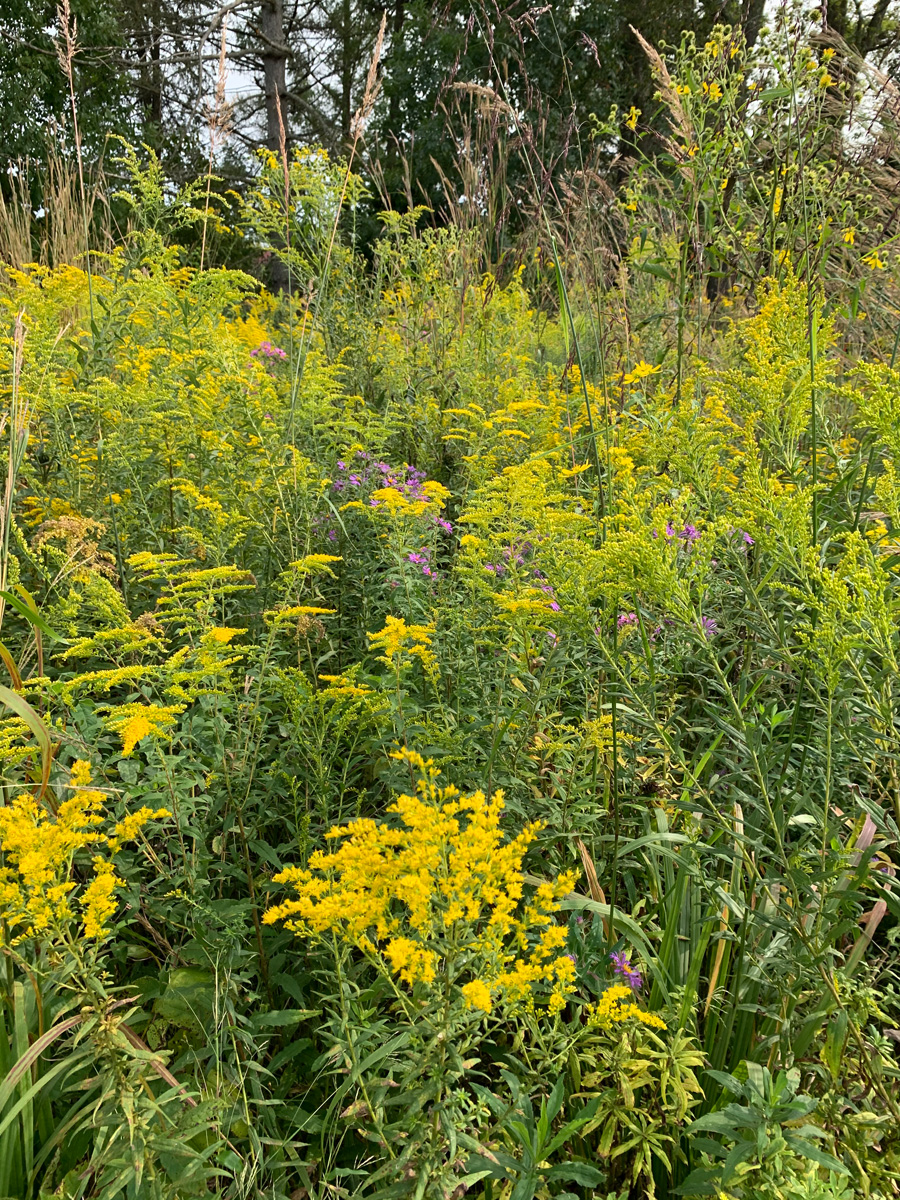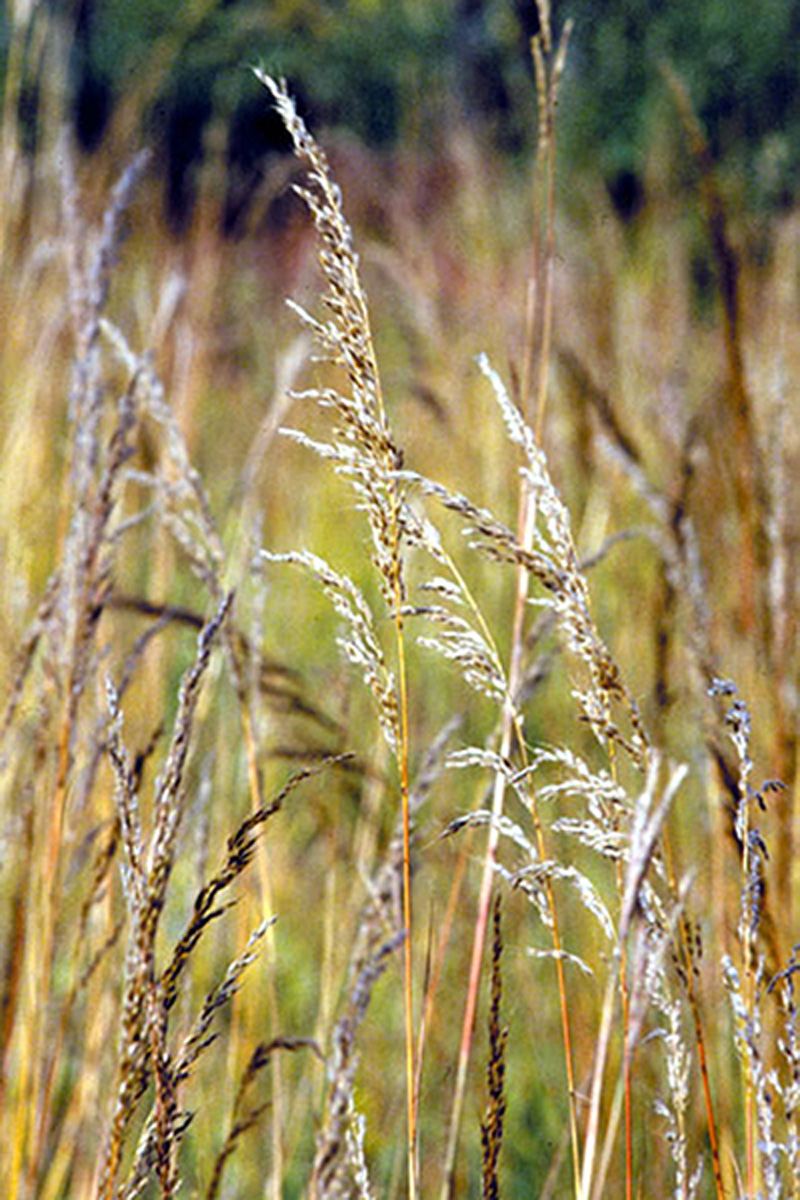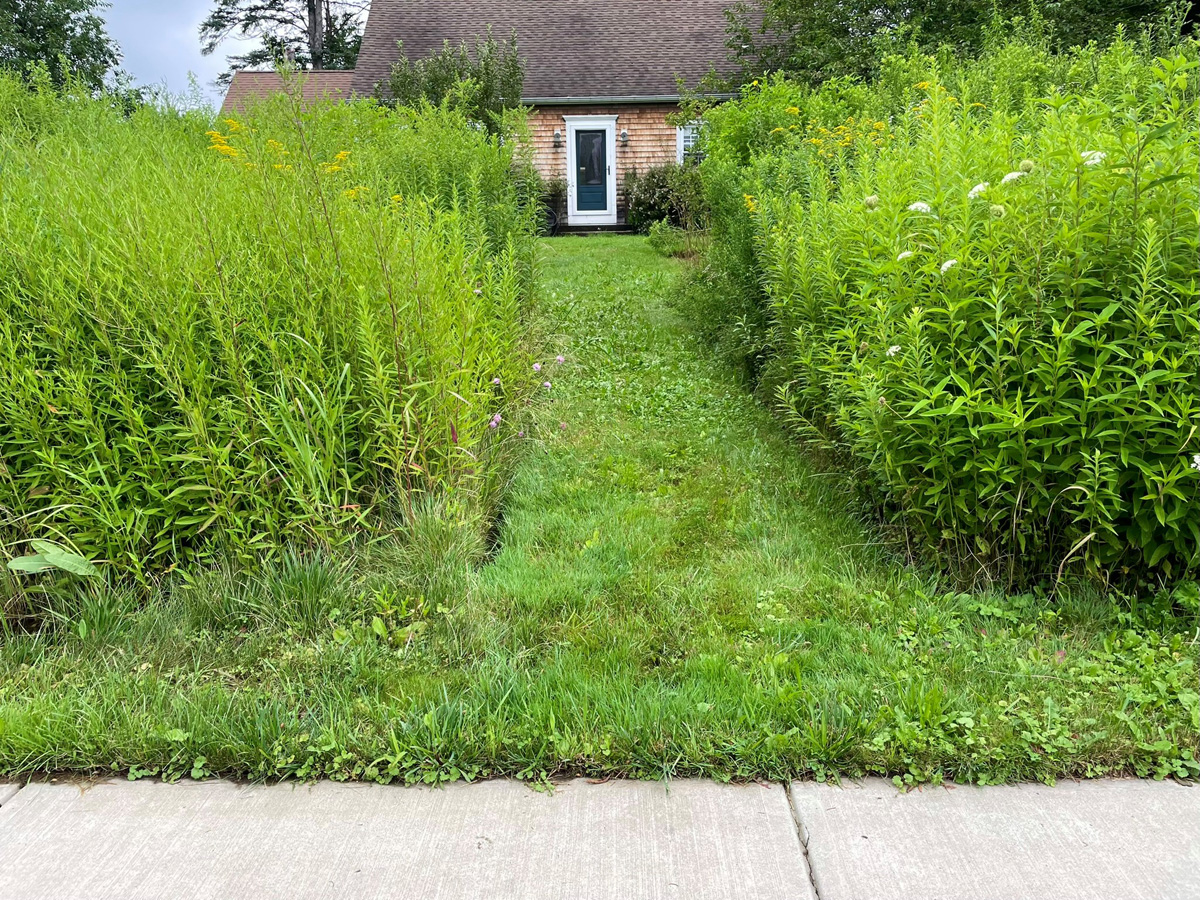
There’s satisfaction in that perfect crisscross of mown lines across flawless green grass, but with the herbicides, pesticides, water, fuel, and effort it demands, the infamous traditional turf lawn is a monetarily and environmentally costly endeavor. It can also be visually dull for the plant enthusiast and nutritionally dull for wildlife, so there are many good reasons to take on establishing a meadow lawn, whether it replaces all or just a few square feet of your yard.
Two Methods to Creating a Meadow Lawn
You can think of meadow lawns in two ways. The first way is the path of least resistance: allowing your lawn to rewild. This can be as simple as letting your lawn grow and seeing what comes in of its own accord. Mowing can be done strategically in order to allow favorable species to flower and produce seed. The second method is eliminating lawn grass entirely and devoting the space to specific flowering perennials and grasses. Though slower and more laborious, this approach has the benefit of offering control over the appearance of your area and the species that compose it.

Method 1: Rewilding Your Lawn with Existing Species
Let it go, let it go! The lawn, that is. Many of our typical Northeastern lawn invaders are in fact locally native plants. You may already have patches of these persistent lawn “weeds,” which are actually low-growing perennials that brush off mowing with confidence and have the tenacity to compete with lawn grass. If you are unsure what you have growing among your grass, take samples to your local agricultural extension, or try a plant-identification app. Some of these native lawn invaders include:
- Blue-eyed grass (Sisyrinchium angustifolium, Zones 4–9)
- Dwarf cinquefoil (Potentilla canadensis, Zones 4–8)
- Common cinquefoil (Potentilla simplex, Zones 3–7)
- Note: Cinquefoil plants have five leaflets. The related invasive species, mock strawberry (Potentilla indica), has only three leaflets and should be avoided.
- Little bluet (Houstonia caerulea, Zones 3–9)
- Pussytoes (Antennaria and cvs., Zones 3–8)
- Robin’s plantain (Erigeron pulchellus, Zones 3–8)
- Roundleaf ragwort (Packera obovata, Zones 3–8)
- Blue violet (Viola sororia, Zones 3–7)
Most of these are cheerful spring bloomers, and you and pollinators can enjoy their blooms by basically following “no-mow May” After these “weedy“ lawn plants go to seed, you can mow for the rest of the season without harming them, and you will likely notice them proliferate. For a tidier look, try mowing or weed whacking between your blooming drifts. You can also introduce any of these species into your lawn by scattering seed in late fall and raking it in with a metal rake.
Method 2: Clearing Turf and Planting Native Meadow Species
The previous method retains the walkability of turf for the majority of the year, but if you’re ready to turn over part or all of your lawn to a more intentional year-round meadow planting, it’s necessary to do a bit of planning and prep. First, there are a few points to consider when siting your meadow. Meadow plants are generally rather tall and coarse, and they need space to spread out. A larger swath will look more intentional and may be best viewed at a bit of a distance, where the mingling of colors and textures is easier to appreciate.
Choose a Mix of Native, Perennial Seeds
It’s also important to assess your growing conditions and select a seed mix accordingly. Beware of mixes that contain mostly annuals. These do not make a sustainable meadow, and the species are for the most part not native to the Northeast. These mixes may deliver an initial shot of color, but a native perennial meadow will eventually be easier to maintain and provides better habitat and food sources for wildlife.
Plants to Add to a Native Meadow Lawn
Some of the fastest spreading natives are goldenrods (Solidago spp. and cvs., Zones 3–9), eupatoriums (Eupatorium spp. and cvs., Zones 4–9), and asters (Symphyotrichum spp. and cvs., Zones 4–8). Species variation is site specific, but here’s an incomplete list of some common, vigorous, and adaptable species, many of which you will find growing naturally in Northeastern meadows in the wild:

Flowering perennials:
- Black-eyed Susan (Rudbeckia hirta spp. and cvs., Zones 3–11)
- Canada goldenrod (Solidago canadensis, Zones 3–9)
- Grass-leaved goldenrod (Euthamia graminifolia, Zones 3–9)
- Rough goldenrod (Solidago rugosa, Zones 4–8)
- Robin’s plantain (Erigeron pulchellus, Zones 3–8)
- Calico aster (Symphyotrichum lateriflorum, Zones 4–8)
- Heart-leaved aster (Symphyotrichum cordifolium, Zones 3–8)
- Panicled aster (Symphyotrichum lanceolatum, Zones 2–9)
- New England aster (Symphyotrichum novae-angliae, Zones 3–9)
- Smooth aster (Symphyotrichum laeve, Zones 3–9)
- Boneset (Eupatorium perfoliatum, Zones 3–8)
- Hyssop-leaved thoroughwort (Eupatorium hyssopifolium, Zones 4–8)
- Joe Pye weed (Eutrochium maculatum, Zones 3–8)
- Anise hyssop (Agastache foeniculum, Zones 4–11)

Grasses:
- Big bluestem (Andropogon gerardii, Zones 2–9)
- Prairie grass (Sorghastrum nutans, Zones 4–9)
- Purple top (Tridens flavus, Zones 4–9)
- Switchgrass (Panicum virgatum, Zones 4–9)
A Seasonal Guide to Establishing a Meadow Lawn
Spring and summer: This is the time to start preparing your area and ensuring your lawn grass is completely vanquished! There are many ways to remove turf, but smothering the grass is one of the least environmentally disruptive methods. For more on sheet mulching, read on here.
Fall: You’ve hopefully spent your summer homing in on the most desirable and successful mix for your conditions. Remove whatever you used to smother the grass with, and start sowing. A quick raking of the dead thatch will allow your seed to make better contact with the soil. You will want to sow late in fall, when freeze-thaw cycles and impending snow cover will help settle your seed and aid spring germination.
Second year: The summer of smothering the previous year should have done away with any perennial weeds, but your fledgling meadow plants will need your help to compete with annual weed pressure. Annual weeds will grow faster than the meadow plants will, making them easy to spot and remove or cut. I have found crabgrass to be the most difficult annual weed to deal with, and if you have a heavy population, consider smothering in that one spot. If desired, the second spring is also a good time to plant any plugs or containerized plants into your meadow. Since most of your seeded meadow perennials won’t bloom their first year, plugging in some mature plants can satisfy the itch to see your meadow take off.

How to Maintain a Meadow Lawn
- A meadow patch looks more garden-like with a neatly mown edge around it. Mowing a few paths through it also helps give the area definition and a look of purposefulness. Think about what form of meadow maintenance works best for you.
- You may be able to manage a small area by hand by pulling weeds and controlling overly aggressive native species like goldenrod, but a larger area may need a mowing every two or three years to keep woody plants from taking over. The best time for this is after a freeze.
- You can also leave the cleanup until spring to benefit overwintering bugs and critters. This will allow seeds to fall into place, providing some volunteer plants for next year’s meadow.
To discuss these plants or ask gardening questions, chat with the author on the Gardening Answers forum.
And for more Northeast regional reports, click here.
Chloë Bowers is a landscape designer based in Newtown, Connecticut.
Photos, unless otherwise noted: Chloë Bowers
Fine Gardening Recommended Products

A.M. Leonard Deluxe Soil Knife & Leather Sheath Combo
Fine Gardening receives a commission for items purchased through links on this site, including Amazon Associates and other affiliate advertising programs.



















Comments
Log in or create an account to post a comment.
Sign up Log in